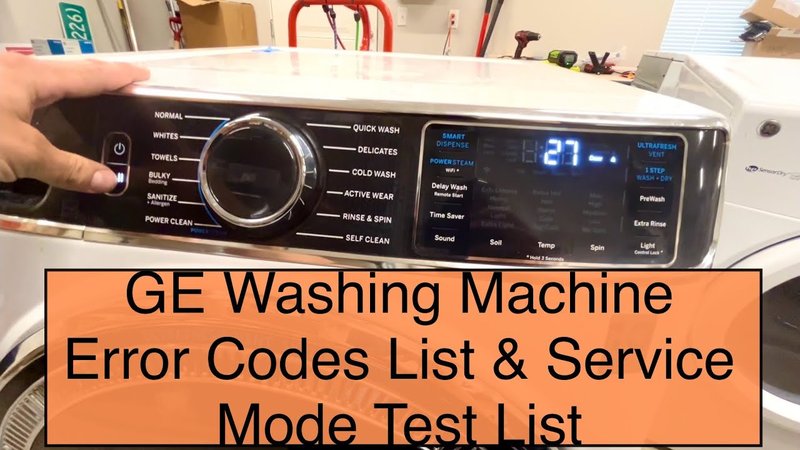
The “F1” error code on your GE washing machine can be a bit mystifying if you’re not familiar with it. In simple terms, it’s your washer’s way of waving a little red flag that something isn’t quite right — much like your car’s check engine light. It doesn’t mean your washing machine is entirely down and out, but it does require some attention. This code often points to a fault in the machine’s motor, which could be due to a number of reasons like a malfunctioning sensor or a wiring issue. It’s like your washing machine saying, “Hey, I need a little help here!”
Understanding the F1 Error Code on GE Washing Machines
First off, let’s dive into understanding what this error really entails. You see, your GE washing machine is equipped with a set of clever sensors and systems designed to ensure each wash cycle runs smoothly. These components are like the brain and nerves of your washer, communicating to make sure everything goes as planned. The “F1” code is essentially a distress signal from this network, indicating that something in the motor’s operational process isn’t going as it should.
The motor in a washing machine is what makes the drum spin — it’s the heart of the operation, pumping life into your laundry cycle. When an F1 code appears, it could mean that the motor control unit is confused or not receiving the right signals. This is a bit like when your phone can’t connect to Wi-Fi; everything else might be working, but your access to the internet is blocked. Similarly, the motor might not be able to operate correctly due to faulty communication within the machine.
While the idea of motor issues might sound intimidating, there’s no need to panic just yet. Sometimes, the code appears due to a one-off glitch that a simple reset can fix. Try unplugging your machine for a minute or two to see if it clears. If the error persists, it might be time to dig deeper. But don’t worry, you’re not expected to do this alone — that’s where calling a technician comes in.
When to Tackle It Yourself and When to Call a Technician
So, you’re faced with an F1 code — what next? You might be tempted to channel your inner DIY enthusiast. For some, the error might resolve with basic troubleshooting like resetting the machine or checking for any obvious issues like a clogged filter. The reset is akin to rebooting your computer when it freezes; it gives your appliance a chance to start fresh and hopefully fix minor hiccups.
However, if after these initial steps the error remains, it signals that the problem runs deeper than a superficial glitch. At this juncture, calling a technician is often the best course of action. Think of a technician as a washing machine doctor. Like a specialist diagnosing a stubborn ailment, they have the training and tools to figure out precisely what’s wrong.
Hiring a pro not only saves time but also ensures that the issue is correctly diagnosed and repaired, preventing further damage. Attempting advanced repairs without the right know-how could lead to more harm than good — kind of like trying to fix a car engine without a mechanic’s expertise. So, when in doubt, ring up a professional to keep your laundry routine on track.
Preventative Tips to Avoid Future Errors
Alright, you’ve got the F1 situation sorted, but how can you prevent it from happening again? Regular maintenance is key to keeping errors at bay — it’s like brushing your teeth to avoid cavities. Ensure you’re not overloading your machine, as this can strain the motor. Treat your washer with care and follow the manufacturer’s instructions regarding load sizes and detergent use.
Additionally, keeping your washing machine clean inside and out can prevent many common issues. Every few months, run an empty wash cycle with some vinegar or a washer cleaner to clear any residue or buildup. This simple step keeps the internals of your machine sparkling and less prone to errors.
Another savvy move is scheduling annual or biannual checkups with a technician, much like seeing your dentist regularly. They’ll inspect and service the machine, catching potential problems before they manifest into error codes. With these preventative measures, you can extend the life of your appliance and enjoy laundry days without unexpected surprises.
In conclusion, while the F1 error code on your GE washing machine might seem daunting, with a bit of understanding and the help of a professional, it can be resolved efficiently. Remember, knowing when to call in the experts is vital to keeping your household running smoothly.
